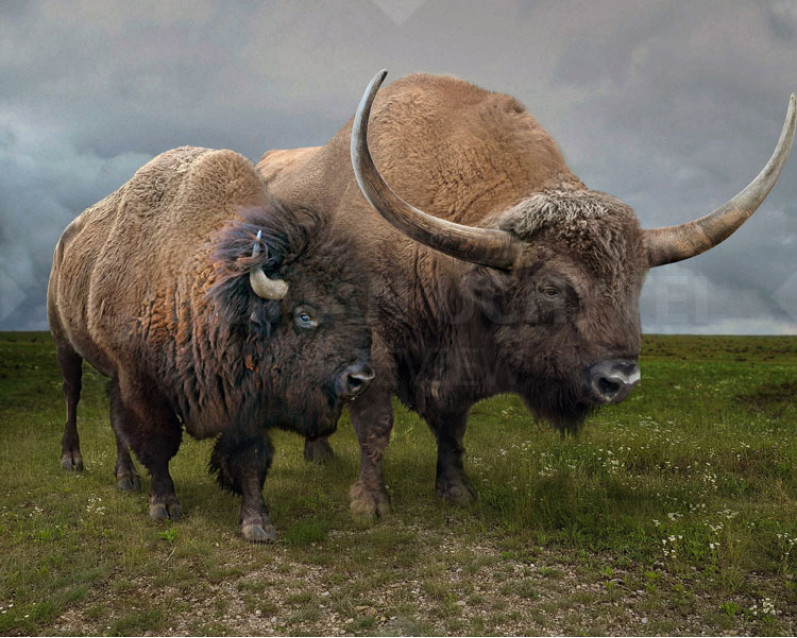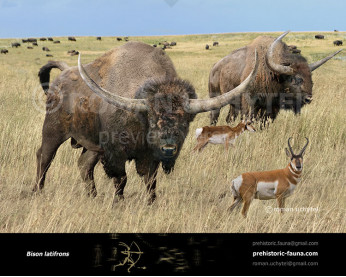Giant North American Bison and American bison
202118202118Giant North American Bison and American bison
Size comparison of extinct and modern animals
Extinct animal - Bison latifrons (Giant North American bison)
Modern relative - Bison bison (American bison)
Bison latifrons, also known as the Giant North American bison, lived during the Late Pleistocene and is considered the largest bovid to have ever lived in North America. With horns spanning over 2 meters (more than 6 feet) from tip to tip and a shoulder height reaching up to 2.5 meters, this prehistoric bison towered over its modern counterpart.
In comparison, the modern American bison (Bison bison), although still impressive, is notably smaller and has shorter, upward-curving horns. Bison bison is the last surviving bison species in North America and is an iconic symbol of the continent’s Great Plains.
Bison latifrons likely evolved from Bison priscus and may have been adapted to open woodlands, where its massive horns could have played a role in display or combat. Today, Bison bison continues to roam grasslands, a living relative that survived where the giants of the Ice Age did not.
More information about Bison latifrons and more images with it you can find on the page Giant North American Bison
About the Size Comparison Project: In 2020, during the coronavirus pandemic, Roman and Alexandra Uchytel created the Size Comparison Project to compare ancient animals with their modern relatives, which went viral on social media. More details about the Size Comparison Project, as well as links to media publications you can find here
Giant North American Bison and American bison
Size comparison of extinct and modern animals
Extinct animal - Bison latifrons (Giant North American bison)
Modern relative - Bison bison (American bison)
Bison latifrons, also known as the Giant North American bison, lived during the Late Pleistocene and is considered the largest bovid to have ever lived in North America. With horns spanning over 2 meters (more than 6 feet) from tip to tip and a shoulder height reaching up to 2.5 meters, this prehistoric bison towered over its modern counterpart.
In comparison, the modern American bison (Bison bison), although still impressive, is notably smaller and has shorter, upward-curving horns. Bison bison is the last surviving bison species in North America and is an iconic symbol of the continent’s Great Plains.
Bison latifrons likely evolved from Bison priscus and may have been adapted to open woodlands, where its massive horns could have played a role in display or combat. Today, Bison bison continues to roam grasslands, a living relative that survived where the giants of the Ice Age did not.
More information about Bison latifrons and more images with it you can find on the page Giant North American Bison
About the Size Comparison Project: In 2020, during the coronavirus pandemic, Roman and Alexandra Uchytel created the Size Comparison Project to compare ancient animals with their modern relatives, which went viral on social media. More details about the Size Comparison Project, as well as links to media publications you can find here


